Within the domain of intelligent home automation, smart thermostats have become essential components of contemporary life. They are essential for energy management and improve comfort in the house at the same time. Smart thermostats are revolutionizing home heating and cooling with their cutting-edge features, which include remote control and learning capabilities. They also save money.
Nest Learning Thermostat
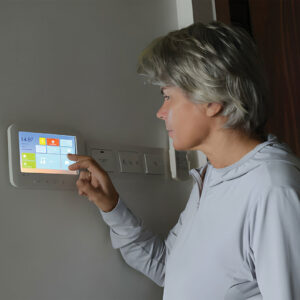
- Design & Display: The Nest thermostat boasts a sleek and elegant design with a high-resolution color display that blends seamlessly with modern interiors.
- Learning Capabilities: It employs advanced learning algorithms to understand your temperature preferences and schedule, adjusting itself over time for maximum comfort and energy savings.
- Integration: Nest integrates smoothly with other Nest devices, creating a cohesive smart home ecosystem. It also supports voice control via Google Home and Amazon Alexa.
- Energy Savings: Nest actively helps you reduce energy consumption and lower utility bills by providing energy usage reports and suggesting energy-saving adjustments.
Ecobee Smart Thermostat
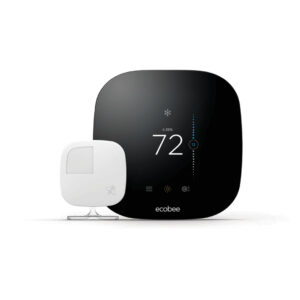
- Built-in Alexa: This thermostat comes with built-in Amazon Alexa, allowing you to control your smart home devices and access information using voice commands.
- Remote Sensors: Ecobee includes remote sensors that monitor temperature and occupancy in different rooms, ensuring comfort throughout your home.
- User-Friendly Interface: Its touchscreen display provides an intuitive interface for easy adjustments and scheduling.
- Energy Efficiency: The Ecobee Smart Thermostat employs smart algorithms to optimize heating and cooling, resulting in energy-efficient operation and cost savings.
- Compatibility: It works with various smart home platforms, including Apple HomeKit, Google Assistant, and Amazon Alexa.
Read More: Ecobee vs Nest Thermostat Which is the right one to choose
LUX Kono Smart Thermostat
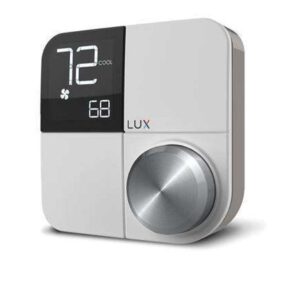
- Customization: The LUX Kono Smart thermostat offers a high degree of customization, including interchangeable faceplates to match your home decor.
- Compatibility: It integrates seamlessly with Apple HomeKit, Alexa, and Google Assistant for versatile control options.
- Smart Features: Geofencing and scheduling capabilities allow for precise temperature control and energy efficiency.
- Stylish Design: The Kono Smart features a modern and minimalistic design, making it a stylish addition to any room.
Honeywell Home Thermostat

- Reliability: Honeywell is a well-established brand known for its reliability and durability in home comfort solutions.
- Compatibility: It is compatible with a wide range of smart home platforms, ensuring seamless integration into your existing ecosystem.
- User-Friendly: The thermostat offers an intuitive interface with easy-to-use controls.
- Energy Savings: Honeywell’s smart algorithms help reduce energy consumption, saving you money on heating and cooling costs.
- Signals: You might have encountered a situation where your Honeywell thermostat is flashing cool on or displaying a cool on blinking thermostat signal. This can be perplexing, especially if you’re not familiar with what these signals mean.
Read More : How to Reset Honeywell Thermostat
Tado Smart Radiator Thermostat

- Room-Level Control: This thermostat is ideal for individual room heating control, allowing you to set different temperatures in various parts of your home.
- Heating System Compatibility: Tado supports multiple heating systems, including radiators and underfloor heating.
- Voice Integration: It integrates with popular voice assistants like Alexa and Google Assistant for voice-controlled temperature adjustments.
- Smart Features: Geofencing and adaptive learning ensure personalized comfort and energy savings.
Mysa Smart Thermostat

- Electric Heating Control: Mysa specializes in controlling electric heating systems, such as baseboard heaters.
- Energy Efficiency: Its algorithms prioritize energy savings while maintaining comfort.
- User-Friendly App: The Mysa app allows for remote control and scheduling, ensuring your home is always at the desired temperature.
- Smart Home Integration: It is compatible with various smart home ecosystems, offering convenience and flexibility.
Carrier Corporation

- HVAC Expertise: Carrier is renowned for its HVAC expertise, providing precise temperature control and efficiency.
- Energy Efficiency: Carrier’s smart thermostats incorporate advanced algorithms for energy savings, making them environmentally friendly and cost-effective.
- Compatibility: These thermostats are compatible with popular smart home platforms, enhancing their usability.
Nortek Inc.
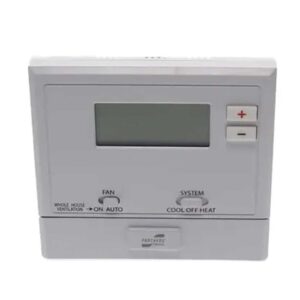
- Advanced Features: Nortek’s thermostats come with advanced features like geofencing and adaptive learning to optimize temperature control.
- Personalized Comfort: The adaptive learning feature tailors heating and cooling patterns to your preferences.
- Voice Control: Integration with popular voice assistants allows for convenient voice commands.
- Energy Efficiency: Nortek prioritizes energy efficiency to help you reduce your carbon footprint and utility bills.
Schneider Electric SE
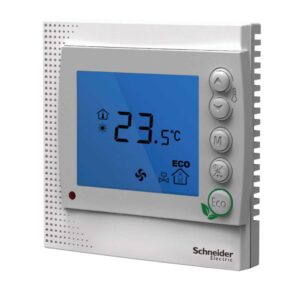
- Energy Management Focus: Schneider Electric prioritizes energy management, offering features to help you reduce energy consumption and costs.
- Integration: It integrates with popular smart home platforms for centralized control and monitoring.
- Energy-Saving Features: Schneider Electric’s thermostats incorporate energy-saving features, such as adaptive scheduling and temperature optimization.
- Efficiency: The focus on energy efficiency makes these thermostats an environmentally conscious choice.
Emerson Electric Co.
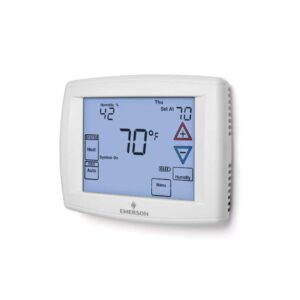
- HVAC Optimization: Emerson’s thermostats are designed to prioritize precise temperature control and HVAC system efficiency.
- Energy Savings: They employ energy-saving algorithms to reduce heating and cooling costs without compromising comfort.
- Compatibility: Emerson thermostats work with various HVAC systems and smart home platforms.
- User-Friendly: They offer a user-friendly interface and scheduling options for easy customization.
Buying Guide: Selecting the Right Smart Thermostat
When choosing a smart thermostat, it’s crucial to consider several factors to ensure you select the best option for your home:
- System Compatibility: Ensure the thermostat is compatible with your home’s heating and cooling systems. Some thermostats are designed for conventional HVAC systems, while others are better suited for systems like heat pumps or radiant heating systems.
- Desired Features: Determine which features are most important to you. Do you need a thermostat that learns your schedule, or are you looking for one with remote sensors for room-specific temperature control? Consider voice control, geofencing, and energy usage reports as well.
- Specific Heating or Cooling Systems: Consider the specific type of your heating or cooling system. For example, if you have a multi-zone system or use radiators, ensure the thermostat can effectively control these.
- Budget: Smart thermostats range in price, with more features typically meaning a higher cost. Decide on a budget that works for you while considering the long-term energy savings you might achieve.
Installation and Setup
The installation process varies among smart thermostats:
- DIY Installation: Many smart thermostats come with detailed instructions and can be installed without professional help. If you’re comfortable with basic wiring and following instructions, DIY installation can be a cost-effective choice.
- Professional Installation: For more complex systems or if you’re unsure about DIY installation, professional thermostat installation is recommended. This ensures the thermostat is set up correctly and integrated with your home’s heating and cooling system.
Tips for Smooth Setup:
- Read the manual thoroughly before beginning.
- Ensure your home’s Wi-Fi network is stable and strong where the thermostat will be installed.
- Gather necessary tools like screwdrivers and possibly a drill before starting.
- Power off your HVAC system before installation to ensure safety.
Energy Efficiency and Cost Savings
Smart thermostats contribute significantly to energy savings, which translates to cost savings:
- Learning Capabilities: Many smart thermostats learn your schedule and adjust temperatures accordingly, avoiding energy waste.
- Remote Control: Adjusting your home’s temperature while you’re away can lead to substantial energy savings.
- Energy Reports: These devices often provide reports on your energy usage, helping you understand and optimize your consumption.
Real-World Examples:
- Case studies have shown that homes using smart thermostats can save up to 20% on their heating and cooling bills.
Integration with Smart Home Systems
A smart thermostat that integrates well with your existing smart home system enhances convenience and efficiency:
- Voice Control: Integration with systems like Amazon Alexa or Google Assistant allows for voice-controlled temperature adjustments.
- Smart Home Devices: Some thermostats can work in tandem with other smart devices, like turning off the heat when a smart window sensor detects an open window.
Conclusion
To sum up, smart thermostats are a great addition to any modern home because they provide increased cost savings, comfort, convenience, and energy efficiency. You can select the ideal thermostat for your needs by taking into account aspects like system compatibility, desired features, and integration with your smart home system. Recall that the initial outlay can result in substantial long-term savings and a more environmentally friendly house. You can improve more than just a single item in your home when you choose the correct smart thermostat.

